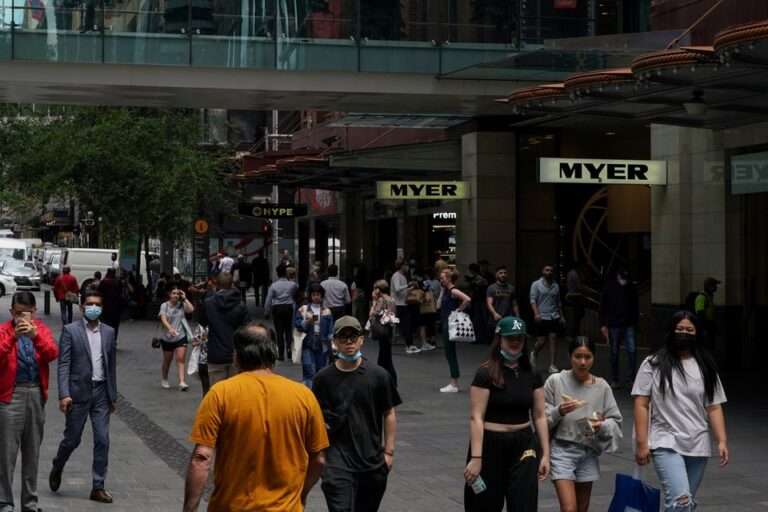
(Reuters) – Australia’s economy likely contracted in the third quarter as fresh lockdowns weighed on consumer spending and investments, but the extent of the fall was milder than the historic recession recorded last year, a Reuters poll showed.
Despite Australia’s success last year in containing the COVID-19 virus, fresh flare ups and the stay-at-home rule imposed this year severely dented economic activity leading to job cuts and calls for a ramped-up vaccination drive.
The Nov. 23-26 poll of 24 economists showed the A$2.07 trillion ($1.5 trillion) economy contracted 2.7% during the July-September quarter. Forecasts ranged from -3.8% to -1.9%.
If economists predictions were realised, it would mark a sharp turnaround in economic activity from the 1.8% and 0.7% expansion rates in the January-March and April-June quarters respectively.
“Extended stay-at-home orders in New South Wales and Victoria will have hit consumption, with services spending set to be particularly impacted,” said Felicity Emmett, senior economist at ANZ.
The year-over-year growth was estimated at 3.0% but that was over a decline of 3.6% in the third quarter last year, revealing no substantial growth.
Data released by the Australian Bureau of Statistics on Thursday showed capital expenditure fell a real 2.2% in the third quarter but an upgrade to future spending showed analysts were expecting a rapid recovery to take hold.
Construction activity too declined last quarter but at a much smaller rate than expected, showing a recovery was not far off.
“The fact investment held up pretty well, we expect GDP to surpass its pre-delta level this quarter. Consumption will probably rebound very sharply given lockdowns have now ended,” said Marcel Thieliant, senior Australia & New Zealand economist at Capital Economics.
Despite the setback to economic growth last quarter, economists do not see that trend turning into a full blown recession.
With about 86% of Australia’s adult population now vaccinated and most restrictions eased, a swift recovery is anticipated on higher consumer spending.
“There is a saying that while history doesn’t repeat, it does rhyme. The pattern for GDP in the second half of 2021 is certainly rhyming with the middle quarters of 2020 – a sharp decline followed by a large bounce,” wrote economists at ANZ.






